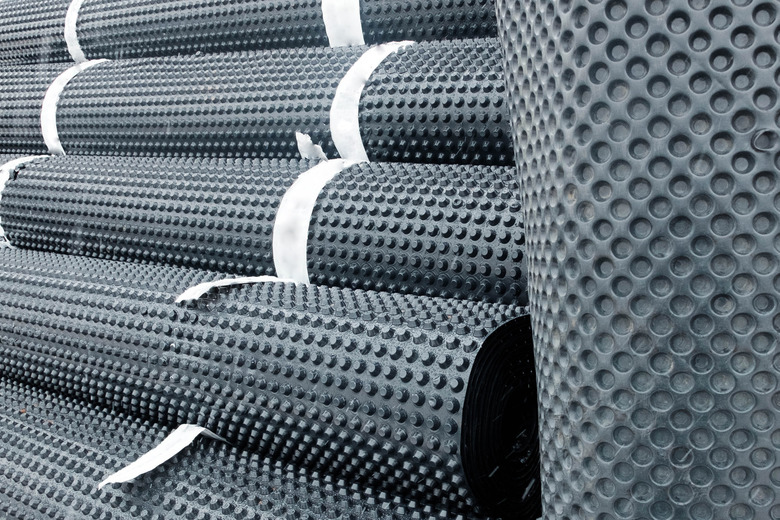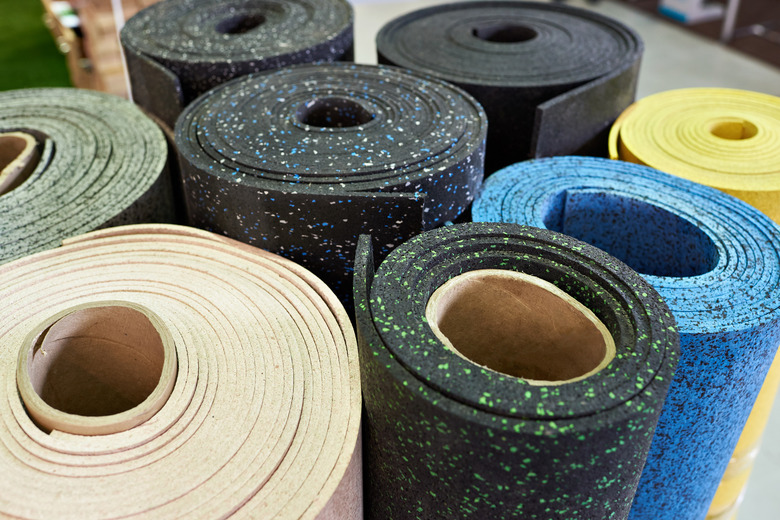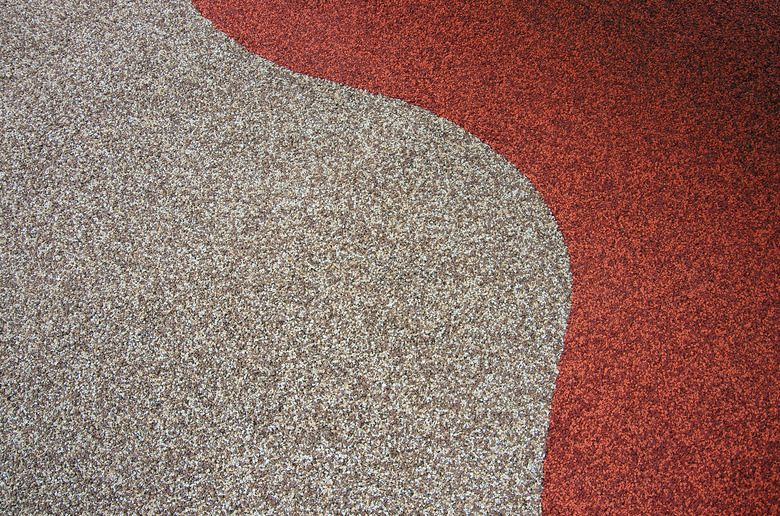Rubber Sheet Flooring: A Homeowner's Flooring Guide
Rubber flooring is a unique option for rooms that need padding and durability, like a home gym, a playroom, a kitchen or a garage. It is shock absorbent, affordable and long-lasting, and it can be easy to install. According to Old House Journal, this low-maintenance, resilient flooring option has been in homes since the 1930s and comes in a variety of textures and colors.
With the proper care and maintenance, rubber flooring will last for years to come despite being in a high-traffic area or not. Rubber flooring comes in a few formats, but rubber tiles and rolls (also known as rubber sheets) are the most popular with homeowners.
What Are Rubber Floor Tiles?
What Are Rubber Floor Tiles?
Rubber tiles interlock like puzzle pieces, which allows for easy installation and disassembly. This means that if damage to a tile occurs, you can simply replace it with another. Tiles can also connect with those of a different style or color so you can mix and match them to give your room a unique look. Rubber tiles come in a variety of densities and thicknesses, the most popular of which is 8 millimeters thick. Materials cost from $3 to $8 per square foot depending on the tile brand and thickness.
While rubber tiles are optimal for small rooms, there are some factors to consider before purchasing this type of flooring. Installation, while easy, can be time consuming, and tiles may give off a distinct rubber odor for the first few months. Standing water on rubber flooring tiles can damage the floor since it can seep through the tile seams and reach the wood subfloor below. Untextured tiles can also be slippery when wet.
What Are Rubber Sheets?
What Are Rubber Sheets?
Rubber sheets offer a more seamless look than interlocking tiles. They come in varied thicknesses and densities and are 4 feet wide and range from 15 to 50 feet in length. They too come in a variety of styles and colors and are the cheaper option at $1 to $5 per square foot. Rubber sheets rely on a glue or tape-down method of installation, making them more permanent than tiles. Installation is relatively easy since you can cover a room with just a couple of pieces, but you may need the help of a professional, as large rolls of the flooring can be heavy.
Sheet rubber is more durable than tile for high-impact activities, which makes sheets the flooring choice for most commercial gyms. They are more water-resistant, as there are fewer seams through which moisture can seep. However, they also have a distinct rubber odor for a few months after installation and can be slippery when wet.
Cleaning and Maintaining Your Rubber Floor
Cleaning and Maintaining Your Rubber Floor
By routinely taking care of rubber flooring, it can last for 20 years or more. Rubber tiles and rolls are inexpensive to maintain. To keep them clean, all you need is a broom, mop, vacuum and mild detergent.
Remove loose dust with a broom or vacuum daily. Then, mop sheet rubber flooring weekly using a moderate amount of water with mild detergent. Make sure you use a nylon, microfiber or sponge mop, as cotton tends to leave lint residue. If you have rubber floor tiles, vacuum them on a medium setting and use a hose attachment to bring up any dirt from their seams. Each rubber tile should be washed individually by hand with a small amount of cleaning solution, but do not use excess water on rubber tiles.
You can also mix 1 cup of vinegar with a gallon of hot water to clean and disinfect a rubber floor, and you can add a few drops of essential oils for added fragrance. For a deeper clean, use a more concentrated mix of vinegar and water and scrub the floor with a brush, applying extra force. Be careful not to scratch it. Change the vinegar and water solution frequently.
For both tiles and roll flooring, make sure to clean spills as soon as you see them since sitting water can damage the floor or subfloor. Also, don't use any harsh cleaners or waxes on a rubber floor, as they can degrade it.


